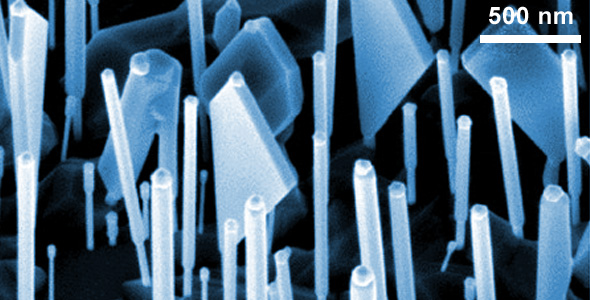Monday, 08 February 2016
A single twinning event to produce InSb “nanosails” exhibiting superior electronic performance
An international collaboration presents in Nano Letters a platform for realizing new device and physics experiments with a strong interplay between electronic and spin degrees of freedom. The ICREA research Prof Jordi Arbiol, ICN2 Group Leader, is among its corresponding authors.

Ultra narrow bandgap III–V semiconductor nanomaterials provide a unique platform for realizing advanced nanoelectronics, thermoelectrics, infrared photodetection, and quantum transport physics. In an international effort recently published in Nano Letters, researchers employ molecular beam epitaxy to synthesize novel nanosheet-like InSb nanostructures exhibiting superior electronic performance.
The first author of the article is Dr. María de la Mata, who recently earned a doctoral degree at the Institut Català de Nanociència i Nanotecnologia (ICN2). The corresponding authors are ICREA Prof Jordi Arbiol, Group Leader of the ICN2 Advanced Electron Nanoscopy Group (GAeN), Philippe Caroff and Renaud Leturcq, from the Institut d’Électronique, de Microélectronique et de Nanotechnologie (France), the Luxembourg Institute of Science and Technology (LIST) (Luxembourg), and The Australian National University (Australia).
The work introduces InSb “nanosails” as a versatile and convenient platform for realizing new device and physics experiments with a strong interplay between electronic and spin degrees of freedom. Nanoscale electrical measurements show great room temperature electron mobility. Through careful morphological and crystallographic characterization, the authors show how this unique 2D geometry is the result of a single twinning event in an otherwise pure zinc blende nanowire structure.
Article reference:
María de la Mata, Renaud Leturcq, Sébastien R. Plissard, Chloé Rolland, Cesar Magen, Jordi Arbiol, Philippe Caroff. Twin-induced InSb nanosails: a convenient high mobility quantum system. Nano Letters, Article ASAP, DOI: 10.1021/acs.nanolett.5b05125 (2016)

